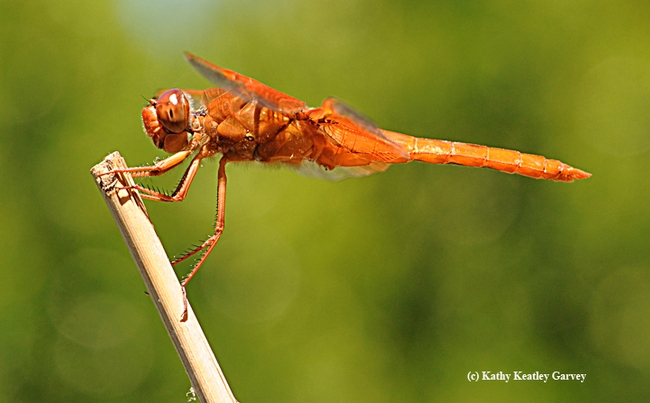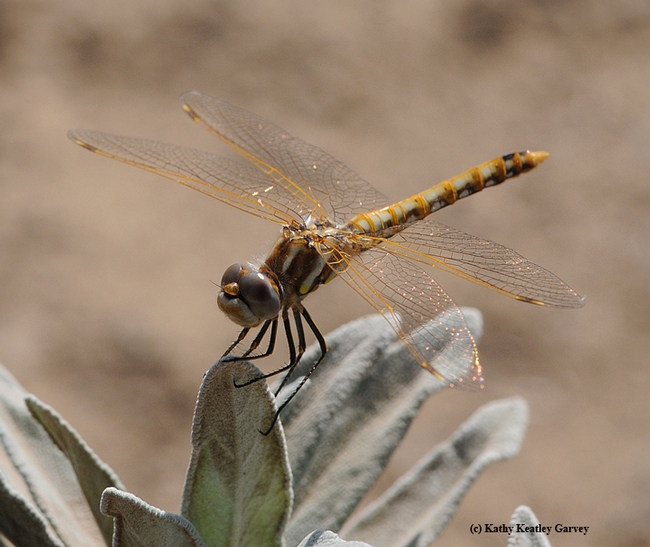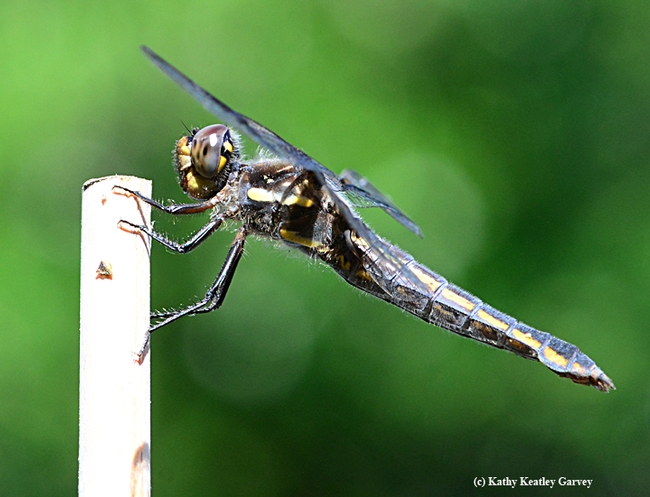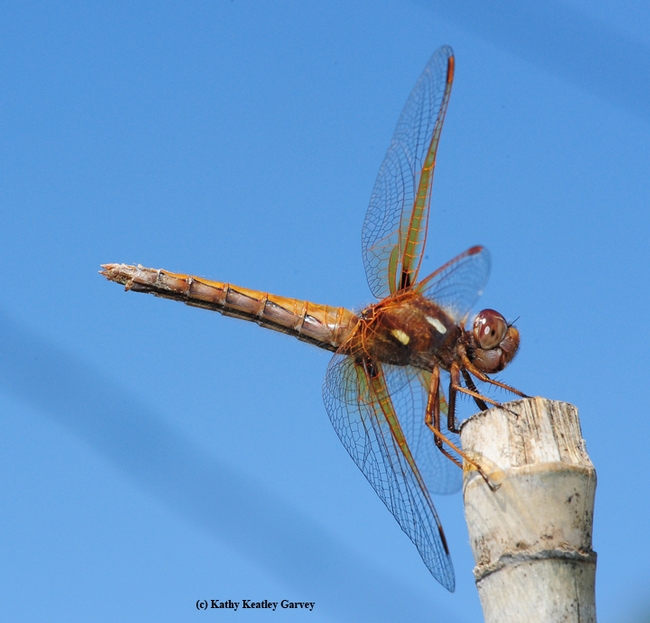Don't you just love those dragonflies?
We watch them circle our fish pond, grab flying insects in mid-air, and then touch down on a bamboo stake in our yard to eat them. Some dragonflies stay for hours; others for what seems like half a second. Some let you walk up to them and touch them. Others are so skittish that they must have once encountered a nasty predator with a bad attitude and a big appetite unfulfilled.
We've observed several different species in our yard (thanks to naturalist Greg Kareofelas of Davis, volunteer at the Bohart Museum of Entomology, University of California, Davis, for identifying the Sympetrums and the "widow skimmer," Libellula luctosa).
The ones we've photographed:
- Red flame skimmer or firecracker skimmer (Libellula saturata), a common dragonfly of the family Libellulidae, native to western North America.
- Variegated meadowhawk (Sympetrum corruptum), a dragonfly of the family Libellulidae, native to North America.
- Widow skimmer (Libellula luctuosa), part of the King Skimmers group of dragonflies that are found throughout much of the United States, except in John Denver territory (The Rockies). You can find them in parts of Canada, including southern Ontario and Quebec.
- Red-veined meadowhawk (Sympetrium madidum), found throughout much of the United States (Alaska, California, Colorado, Iowa, Idaho, Missouri, Montana, Nebraska, North Dakota, Oregon, Washington and Wyoming) and much of Canada (Alberta, British Columbia, Manitoba, Northwest Territories, Nunavut, Saskatchewan and Yukon)
Can you believe dragonflies were some of the first winged insects that evolved 300 millions years ago? And that the order they belong to, Odonata, means "toothed one" in Greek?
Can you believe that globally, we have more than 5,000 known species of dragonflies?
Can you believe that dragonflies eat only the prey they catch in mid-air? And that they grab them with their feet? Umm, dead bee on the ground? No, thanks!
Can you believe that dragonfly called the globe skinner has the longest migration of any insect—11,000 miles back and forth across the Indian Ocean?
For those and other interesting facts, be sure to read Sarah Zielinski's "14 fun facts about dragonflies" published Oct. 5, 2011 in smithsonian.com
For a close look at some of the Bohart Museum's collection of dragonflies, you can visit the insect museum, located in Room 1124 of the Academic Surge building on Crocker Lane, from Monday through Thursday, 9 a.m. noon, and from noon to 5 p.m. (excluding holidays). Admission is free. You can even buy dragonfly-related items in the gift shop. That would include posters (the work of Greg Kareofelas and Fran Keller) and jewelry.
The Bohart Museum, directed by Lynn Kimsey, professor of entomology at UC Davis, houses nearly eight million insect specimens. And not just dragonflies, bees and butterflies. There are critters you've never seen before. And some, such as the Xerces butterfly (Glaucopsyche xerces), are extinct.
The Bohart's next weekend open house, the last of the 2013-2014 academic year, is Saturday, July 26 from 1 to 4 p.m. The theme focuses on spiders: "Arachnids: Awesome or Awful?" It's family-oriented and free and open to the public. (For more information contact Tabatha Yang, education and outreach coordinator, at tabyang@ucdavis.edu).
Attached Images:

Red flame skimmer or firecracker skimmer (Libellula saturata). (Photo by Kathy Keatley Garvey)

Variegated meadowhawk (Sympetrum corruptum). (Photo by Kathy Keatley Garvey)

Widow skimmer (Libellula luctuosa). (Photo by Kathy Keatley Garvey)

Red-veined meadowhawk (Sympetrium madidum). (Photo by Kathy Keatley Garvey)